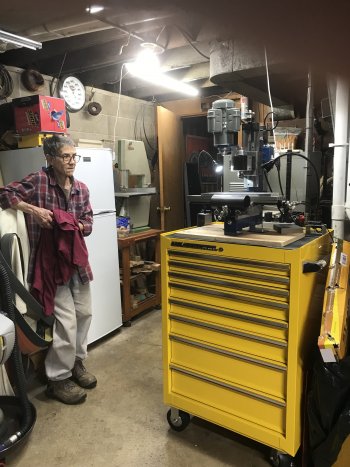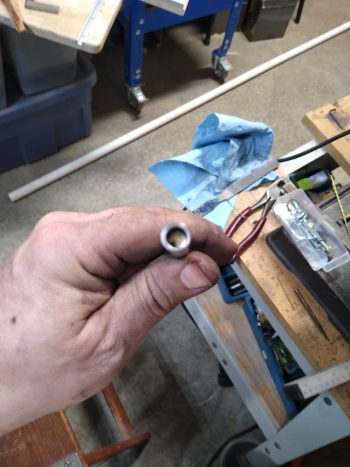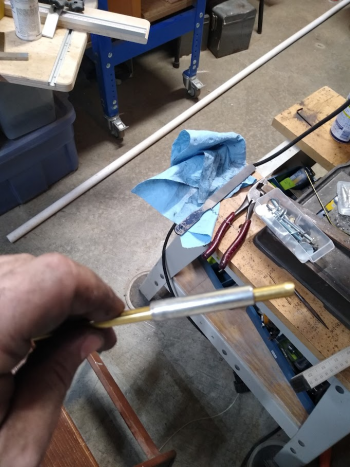Okay, if you thought I was a cheap b*d before, now that I have committed almost $6K to a belt grinder and HT oven ... just wait 
So, I assume it is possible that one would need some kind of mill, be it, micro (Proxxon 70), mini (Little Machine Shop), Bridgeport... who knows what?
If I am focusing primarily on folders (starting with slip-joints, and going as far as I can up the line... )
What tasks truly lend themselves to a mill or heaven forbid a lathe? Are there reasonable alternatives to the process?
Which size/type of mill is minimally "Necessary", or can everything be done reasonably in some other way?
I do have a drill press, and a cheap x-y table for it. However, last I tried, I was not able to tolerate any horizontal pressure on it without the quill spitting out the MT2 like an unexpected piece of broccoli from a 2 year old's mouth. I have considered torching the quill and setting the MT2 in there with a little mallet persuasion, or even buying a cheap second DP and some super-glue.
Other than the discussion about liner relief, or bushing creation, I am not quite sure what the requirement for a mill is. I have not purchased "Slipjoints My Way" because of the review comments that suggests Robinson heavily relies on such things as a vertical mill, and "complete machine shop".
There is nothing like the right tool for the job, and bigger is always better, and more powerful is far better than less powerful, and more tools definitely helps one win the game by dying with the most amount of toys.
All that said, what are people getting away with? In a perfect world, I would want a full sized vertical mill with all the accouterments as well as full sized metal lathe similarly accessorized as well. That is definitely not happening, not only due to money, but also space.
Can I just get away with turning up, my existing DP, and x-y table? Simply replacing the x-y table. Or perhaps there is something I can do involving my wood lathe? Can I get away with one of the tiny (Like Proxxon 70) mills, or do I need at least a mini like the LMS, or HF?
BTW, if your answer is going to be something like "Just spend the money..." or "Gotta spend it to make it..." or something similar, I already know that particular answer.
So, I assume it is possible that one would need some kind of mill, be it, micro (Proxxon 70), mini (Little Machine Shop), Bridgeport... who knows what?
If I am focusing primarily on folders (starting with slip-joints, and going as far as I can up the line... )
What tasks truly lend themselves to a mill or heaven forbid a lathe? Are there reasonable alternatives to the process?
Which size/type of mill is minimally "Necessary", or can everything be done reasonably in some other way?
I do have a drill press, and a cheap x-y table for it. However, last I tried, I was not able to tolerate any horizontal pressure on it without the quill spitting out the MT2 like an unexpected piece of broccoli from a 2 year old's mouth. I have considered torching the quill and setting the MT2 in there with a little mallet persuasion, or even buying a cheap second DP and some super-glue.
Other than the discussion about liner relief, or bushing creation, I am not quite sure what the requirement for a mill is. I have not purchased "Slipjoints My Way" because of the review comments that suggests Robinson heavily relies on such things as a vertical mill, and "complete machine shop".
There is nothing like the right tool for the job, and bigger is always better, and more powerful is far better than less powerful, and more tools definitely helps one win the game by dying with the most amount of toys.
All that said, what are people getting away with? In a perfect world, I would want a full sized vertical mill with all the accouterments as well as full sized metal lathe similarly accessorized as well. That is definitely not happening, not only due to money, but also space.
Can I just get away with turning up, my existing DP, and x-y table? Simply replacing the x-y table. Or perhaps there is something I can do involving my wood lathe? Can I get away with one of the tiny (Like Proxxon 70) mills, or do I need at least a mini like the LMS, or HF?
BTW, if your answer is going to be something like "Just spend the money..." or "Gotta spend it to make it..." or something similar, I already know that particular answer.




